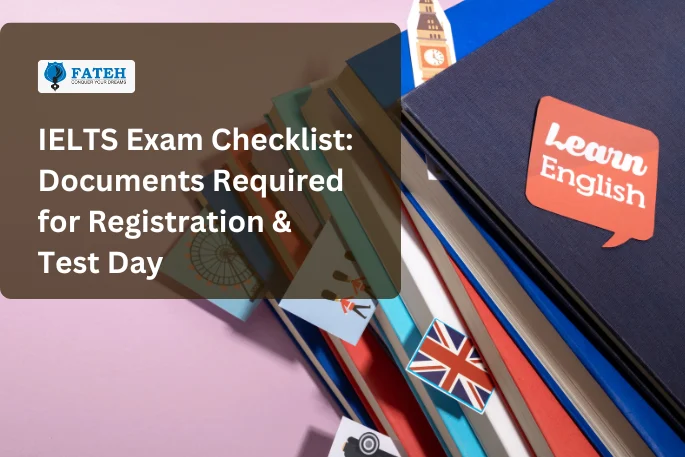Introduction
Recently, the dream of studying or working abroad has become more achievable than ever. With global opportunities and increased access to information, students and professionals worldwide are actively pursuing international education and career paths, but this also comes with a checklist of essential requirements. One of the most important among them is proving your English language ability, and that is where the IELTS exam plays a key role. Whether your goal is university admission, professional registration, or immigration, the IELTS score is often a stringent requirement.
IELTS, also known as the International English Language Testing System, is one of the most widely accepted English language tests for higher education, job opportunities, and immigration. While preparing for the test itself is important, many candidates often overlook a crucial detail that can significantly impact their exam day experience: having the right documents. It might sound simple—just carrying an ID, right? But here is the thing: showing up with the wrong ID, an expired passport, or a mismatched document can prevent you from even entering the test room.
If your documents do not meet IELTS standards, you may not be able to take the test that day. That means losing your test fee, your time, and possibly delaying important plans like university admissions or visa applications. Your documents are not just a formality—they are your entry ticket to the entire experience.
To make sure your IELTS journey goes smoothly, it is essential to understand which documents you need and why they matter. In this article, we will guide you through each stage—registration, test day, and post-exam—so you are fully prepared, confident, and focused on what truly counts: giving your best on test day.
Overview of Required Documents
When it comes to the IELTS exam, having the correct documents is just as important as preparing for the test itself. Unfortunately, many test-takers underestimate this aspect of the process, only to face complications later. Whether you are signing up for the exam or heading to the test centre, ensuring that your documentation is accurate, valid, and complete can save you from unnecessary stress or, in some cases, being turned away at the door.
A valid passport is the most essential requirement for both registration and test day, as it serves as your primary ID. Some centres may accept a national ID, but this varies by location. During registration, you will also need to provide accurate personal details and, in some instances, a passport-sized photo. Keeping proof of payment after settling the test fee is a wise precaution. On exam day, carrying the same ID used during registration is required. A confirmation email can clarify test details, but it is not always necessary for checking results. Being fully prepared with the correct documents helps ensure smooth, stress-free test experience.
Below, you can find more detailed information about the documents required at each stage of the IELTS process, so you are fully prepared from start to finish.
Documents Required for IELTS Exam Registration
- Valid Passport Your passport is the primary form of identification accepted by the IELTS test centres. It must be current and unexpired. All the information you enter during registration, like your name and date of birth, should match exactly with what is on your passport. Any mismatch might cause issues during verification.
- National Identity Card (if applicable) In some countries, including India, test centres may accept a national ID card instead of a passport. However, not all centres offer this option, so it is advisable to check in advance. The ID should display your name, photo, date of birth, and signature.
- Accurate Personal Details You will be required to provide personal details during registration, including your full name, date of birth, phone number, and email address. You must carefully enter these details, as any errors could potentially impact your test results or delay their delivery.
- Passport-Sized Photograph (if requested) Computer-delivered IELTS centres generally capture a digital photo on the test day; however, centres handling offline registrations may still request a recent passport-sized photograph during the registration process.
- Proof of Payment Once you have paid your test fee, it is important to save the payment receipt or confirmation. This acts as proof that your registration was successful and may be helpful if any technical issues arise or you need to reschedule your test.
Documents Required on IELTS Exam Day
- Same valid ID used during registration: This is the most critical requirement. The test centre will verify your identity using the same ID document you used when registering. If you bring a different ID or an expired one, you may not be allowed to take the test. Double-check this before you leave for the exam centre.
- Confirmation Email or Letter: While not always mandatory, having a copy of your IELTS booking confirmation (either printed or on your phone) can be helpful. It contains details like your test time, centre address, and candidate number—useful if you need to confirm any last-minute details.
- Stationery (for the paper-based test): If you are taking the paper-based version of the IELTS, you should bring at least two HB pencils, a good eraser, and pens. While some centres offer stationery, it is advisable to bring your own unless otherwise instructed.
- Any additional items based on the centre rules: Each test centre may have slightly different rules—some may require an extra photo; others might have specific arrival instructions. Always review your centre’s guidelines beforehand to avoid surprises on the day
Common Mistakes to Avoid
Some candidates overlook the smaller, practical details that can have a serious impact on their exam day. One of the most common mistakes is bringing an expired identification document or, worse, a different ID than the one used during registration. As the exam centre verifies your identity using the document you registered for, any discrepancy can result in you being denied entry, regardless of how well-prepared you are.
Another frequent oversight is forgetting to bring the confirmation email or SMS that outlines your test details. It can help with check-in, especially if there are registration issues, but it’s not always required. Furthermore, arriving late can also jeopardise your opportunity to take the test. IELTS centres adhere to a strict schedule, and they typically do not accommodate late arrivals once the check-in window closes.
Lastly, many candidates miss important instructions specific to their testing centres. Each location may have its set of guidelines, such as requiring a passport-sized photo or printed proof of payment. Failing to review these instructions in advance can lead to unnecessary delays or complications.
To avoid these setbacks, it is advisable to:
- Use the same, valid ID throughout your IELTS journey
- Review all emails and messages from your test centre
- Prepare all required documents at least a day in advance
- Arrive early at the test venue
Conclusion
Overall, the IELTS exam is a major turning point, and while most individuals concentrate on preparing for the test itself, it is equally important to get the basics right, such as ensuring your documents are in order. Consider it this way: you have invested considerable effort in studying and booking your test, so the last thing you want is to face avoidable issues on the day due to a missing ID or a forgotten confirmation email.
Spending a few minutes verifying your valid ID, payment proof, and centre -specific requirements can have a significant impact on your experience. While it may seem like a minor detail, it establishes the foundation for a seamless and stress-free experience. And when you walk into that test room fully prepared, it gives you one less thing to worry about.
FAQs
In most cases, the answer is no. A valid passport is the primary and often the only accepted form of identification for registering and appearing in the IELTS exam. However, in some regions, test centres may accept alternative IDs such as a national identity card—but this is rare and strictly centre-specific. If you do not have a passport, check it at your exam site before booking. Attempting to appear without the accepted ID may result in being denied entry to the test room.
The most widely accepted form of ID for the IELTS exam is your passport. Some test centres may accept a national identity card, but this varies by country and even by test location. The ID must include your full name, a clear photograph, date of birth, and signature. Always check with your local testing centre to confirm which ID is accepted, as bringing the wrong one can lead to disqualification on the day of the exam.
The IELTS exam is conducted under strict guidelines to ensure fairness and security. Personal belongings, such as mobile phones, smartwatches, bags, books, and electronic devices, are strictly prohibited inside the testing room. Usually, they will ask you to leave these in a designated storage area. Food and drinks (except for a clear water bottle with the label removed) are also not allowed. Any study materials, notes, or cheat sheets will lead to immediate disqualification. Even talking or interacting with other candidates during the test can be considered misconduct. It is always a good idea to review the test centre's rules beforehand to avoid any last-minute surprises.


